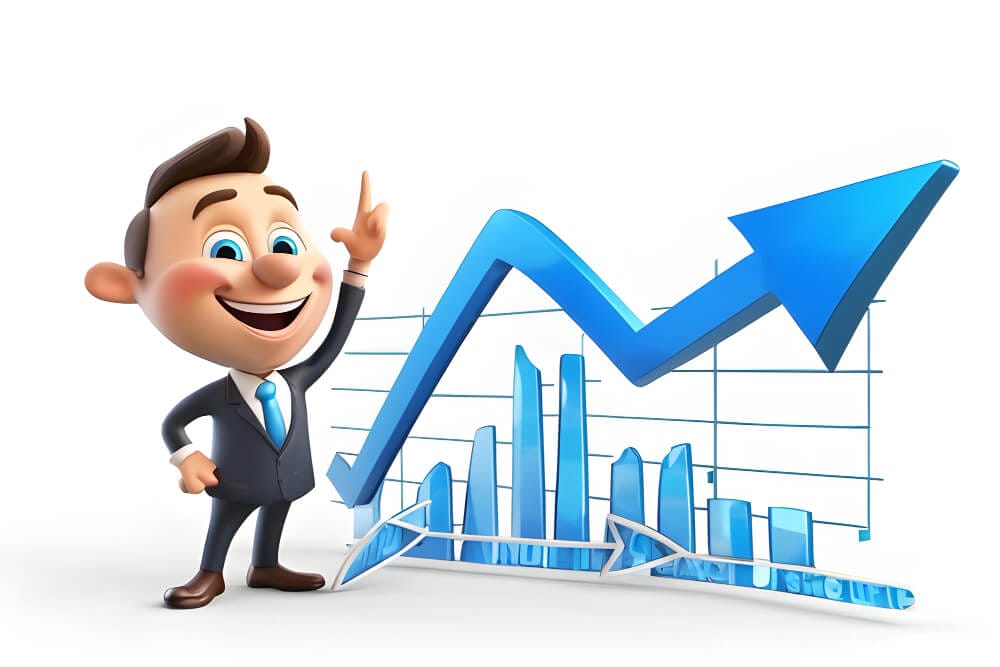Trading can be a rollercoaster of emotions. One day you’re on top of the world, and the next, you’re wondering why you even started. It’s easy to feel lost, especially with the countless tools and strategies available. But if there’s one tool that can give you a sense of direction, it’s the moving average. In this article, we’ll dive into how moving average tools can boost your trading confidence, and by the end, you’ll be equipped with the knowledge to navigate the often confusing waters of the market.
What Is a Moving Average?
Let’s start with the basics. A moving average (MA) is a statistical calculation that helps smooth out price data by creating a constantly updated average price. It’s like the GPS of trading – it gives you a sense of direction without the constant zigzagging of individual data points. But don’t get too comfortable; even this trusty tool has its quirks.

Why Moving Averages Matter
So, why should you care about moving averages? Well, they’re like the foundation of a house. Without a solid foundation, everything else crumbles. Moving averages help traders identify the trend direction, provide support and resistance levels, and signal potential buy and sell opportunities. They’re not perfect, but they can be a lifesaver in the chaotic world of trading.
Types of Moving Averages
Simple Moving Average (SMA)
The Simple Moving Average is, as the name suggests, simple. It calculates the average price over a specified number of periods. For example, a 10-day SMA will add up the closing prices of the last ten days and divide by ten. It’s like averaging out the moods of a group of people over a week – you get a general sense but miss out on the nuances.
Exponential Moving Average (EMA)
The Exponential Moving Average gives more weight to recent prices, making it more responsive to new information. It’s like paying more attention to the latest reviews rather than relying solely on outdated opinions. This makes the EMA more sensitive to price changes, which can be both a blessing and a curse.

Weighted Moving Average (WMA)
The Weighted Moving Average assigns different weights to each data point, with the most recent data receiving the most weight. Think of it as giving more importance to recent events in your life while not completely ignoring the past. It’s a bit more complex but offers a balance between the SMA and EMA.
How to Use Moving Averages in Trading
Identifying Trends
One of the primary uses of moving averages is trend identification. If the price is above the moving average, it indicates an uptrend. Conversely, if the price is below, it suggests a downtrend. It’s like knowing whether you’re walking uphill or downhill – it gives you a sense of what to expect next.
Support and Resistance Levels
Moving averages can act as dynamic support and resistance levels. Imagine a moving average as a safety net – prices often bounce off this level, giving you a clue about potential market reversals. But beware, just like a frayed safety net, moving averages can break, leading to unexpected falls.

Crossover Signals
Crossover signals occur when two different moving averages cross each other. A common example is the Golden Cross, where a short-term MA crosses above a long-term MA, signaling a potential uptrend. On the flip side, a Death Cross occurs when the short-term MA crosses below the long-term MA, indicating a potential downtrend. These signals are like traffic lights – they tell you when to go, slow down, or stop.
Common Pitfalls of Moving Averages
Lagging Indicator
One of the biggest drawbacks of moving averages is that they’re lagging indicators. They rely on past price data, making them slow to react to sudden market changes. It’s like trying to steer a ship based on the stars – it works, but not when you need to make quick turns.
False Signals
Moving averages are not immune to false signals. Sometimes they can indicate a trend reversal that doesn’t materialize, leading to losses. It’s like mistaking a mirage for an oasis – it looks promising but can leave you high and dry.

Overfitting
Overfitting occurs when traders rely too heavily on specific moving average settings, making their strategy less adaptable to different market conditions. It’s like wearing the same outfit for every occasion – what works for a casual day out might not be suitable for a formal event.
Strategies for Using Moving Averages
Single Moving Average Strategy
This strategy involves using a single moving average to determine the trend. If the price is above the MA, you buy; if it’s below, you sell. It’s straightforward but lacks nuance, like reading a book by its cover.
Dual Moving Average Strategy
The dual moving average strategy involves using two moving averages – one short-term and one long-term. You buy when the short-term MA crosses above the long-term MA and sell when it crosses below. It’s a bit more sophisticated, like having two sets of eyes on the market.

Multiple Moving Average Strategy
In this strategy, traders use multiple moving averages to get a more comprehensive view of the market. It’s like having a panel of experts rather than relying on a single opinion. This strategy can help you filter out noise and focus on the bigger picture.
Choosing the Right Moving Average
Time Periods
The choice of time periods for moving averages can significantly impact your trading results. Shorter periods make the MA more responsive but prone to false signals, while longer periods provide more stability but lag behind the market. It’s like choosing between a sports car and a minivan – each has its pros and cons.
Type of Moving Average
The type of moving average you choose – SMA, EMA, or WMA – depends on your trading style and risk tolerance. If you prefer a more responsive tool, go for the EMA. If you like it simple, stick with the SMA. It’s all about finding the right fit for you.

Market Conditions
Different market conditions may require different moving average settings. In a volatile market, shorter MAs may work better, while longer MAs are more suitable for stable markets. It’s like adjusting your speed depending on road conditions – sometimes you need to slow down, and other times you can go full throttle.
The Importance of Backtesting
Before diving into live trading, it’s crucial to backtest your moving average strategies. Backtesting involves applying your strategy to historical data to see how it would have performed. It’s like rehearsing for a play – you want to iron out any kinks before the big performance. While backtesting isn’t foolproof, it can give you a good sense of what to expect.
Emotional Management in Trading
Trading isn’t just about numbers and strategies; it’s also about managing emotions. The ups and downs can take a toll, and moving averages can provide a sense of stability. However, relying too heavily on them can lead to complacency. It’s essential to stay alert and not let your guard down, even if you have a reliable tool like moving averages.

Moving Averages in Different Markets
Stocks
Moving averages are widely used in the stock market. They can help traders identify long-term trends and make more informed decisions. However, they may not be as effective during earnings season or other significant events that can cause sudden price movements. It’s like navigating through a storm – even the best tools can’t guarantee smooth sailing.
Forex
In the forex market, moving averages can help traders spot trends in currency pairs. The 200-day moving average is a popular choice among forex traders. However, like in other markets, it’s crucial to consider other factors like economic news and geopolitical events. Relying solely on moving averages in forex is like driving with only one eye open – you miss out on the full picture.
Cryptocurrency
The cryptocurrency market is notorious for its volatility, making moving averages both useful and challenging. They can help identify trends, but the rapid price swings can render them less reliable. It’s like trying to predict the weather – you can make an educated guess, but surprises are always possible.

Conclusion
Moving averages are powerful tools in the trader’s arsenal, offering valuable insights into market trends and potential entry and exit points. However, they’re not foolproof and should be used with caution. Like any tool, they have their limitations and should be complemented with other forms of analysis. Whether you’re a seasoned trader or a newbie, understanding moving averages can boost your trading confidence. Just remember, no tool can guarantee success, and the market is always full of surprises.
FAQs
1. What is the best type of moving average for beginners?
For beginners, the Simple Moving Average (SMA) is a good starting point. It’s easy to understand and implement, making it ideal for those just getting into trading.
2. Can moving averages be used in all markets?
Yes, moving averages can be applied across different markets, including stocks, forex, and cryptocurrencies. However, their effectiveness may vary depending on market conditions.
3. What time periods should I use for moving averages?
The choice of time periods depends on your trading style. Short-term traders may use shorter periods like 10 or 20 days, while long-term traders might opt for 50 or 200 days.
4. Are moving averages suitable for volatile markets?
Moving averages can be useful in volatile markets, but they may also generate false signals. It’s essential to combine them with other forms of analysis to make well-informed decisions.
5. How do moving averages help in emotional management?
Moving averages can provide a sense of stability and direction, helping traders manage emotions during volatile market conditions. However, they should not be solely relied upon, as no tool can eliminate market risk.
